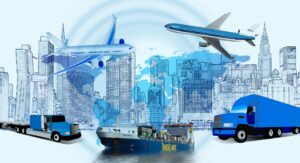Mar 04, 2024

Southeast Asia is one of the most crucial export economies globally, boasting major manufacturing hubs in Indonesia, Malaysia, Vietnam, and India. The region plays a significant role in manufacturing and serves as a substantial consumer market.
This dual dynamic of manufacturing and consumption has created a substantial opportunity for businesses, especially in the context of airfreight. Cross-border e-commerce has been critical to this, with the need to swiftly transport products from manufacturing hubs in Asia to consumers in Europe and America.
Recognising this opportunity, WebCargo by Freightos has turned its focus to Southeast Asia. Starting with operations in India, this has expanded to cover markets including Singapore, Vietnam, Thailand, Indonesia, and Malaysia.
Joyce Tai, Executive Vice President of Worldwide Partnerships at Freightos, highlighted that the key driver behind this expansion lies in the industry’s embrace of digitalisation. As businesses transition away from traditional communication methods, the sector has welcomed the convenience and efficiency of digital platforms. This shift has notably improved customer service and streamlined operations.
“We are seeing the market increasingly reflect the embrace of digital solutions. Companies crave these solutions, so we are here at the right time,” Tai explained.
Platforms in play
Freightos is clear that airlines need to be prepared, not just from a technical and digital standpoint, but also to shift their mindset. Traditionally, airlines viewed digitalisation merely as a project. However, over the past 5-10 years, they have realised it is a comprehensive, transformative opportunity.
This involves placing the customer at the core of their strategy. While it’s easy to articulate, implementing such changes is a substantial journey. In the last two years, Asian-based airlines, in particular, have undergone significant transformations, embracing technology throughout their operations. This change is not limited to airlines alone; freight forwarding companies invest in technology and build teams to facilitate faster and more efficient customer service.
“You have to be able to serve your customers faster, so all this is coming together,” Tai explained. “Investing in the technology, investing in the team, it is a journey.”
READ: Augmented GSSA solutions
Setting standards
One of the most significant challenges in digitalisation revolves around data standards. The absence of a common layer can complicate matters when dealing with various entities communicating in distinct languages. The critical question becomes: how can the industry achieve a shared understanding of digitalisation across diverse regions and sectors?
Addressing this challenge has been a priority for Freightos for the past four to five years. The pivotal initiative in this direction is Open Freight, which aims to establish a common data standard. The broader vision is to create a unified language. By defining these data standards, Freightos hopes to lay the foundation for seamless integration with trucking partners, freight forwarders, airlines, carriers, and other service providers.
“Many people have different levels of fluency, but at least we all speak the same language. That is the first step to a united front of digitalisation,” Tai said.
“We are mapping out a digital roadmap so tools can be integrated easily,” she added, pointing to the vast adoption of their systems throughout forwarders, cargo handlers, and key players at all levels of the airfreight industry.
Overcoming resistance
Despite the opportunity that technology presents, there is still a noticeable discomfort among some when switching up processes that have been in place for decades. To ensure wider adoption, Freightos accepts that it is critical to explain in simple terms and show swiftly how digitalisation can help combat existing challenges in the sector.
For example, regarding e-commerce, Freightos highlights the initial step of establishing a Product Information Management System (PIMS). This has been crucial for their customers in the freight industry, facilitating the organisation of stock lists, generating quotes, etc.
“If we can show them it’s easy to act faster and sell more, the conversation will be expanded, and the fear of change will go down,” Tai explained.
“Digitalisation is not some dark magic. Every single industry outside of logistics has done it. You can see all the brands that have realised this is a no-brainer. The success stories are clear. There is nothing scary about innovation.”
The post Changing operations with technology appeared first on AIR CARGO WEEK.
Go to Source
Author: Edward Hardy




